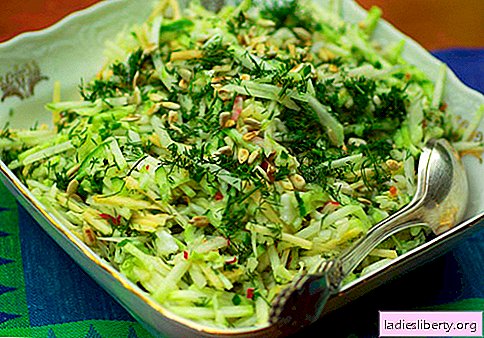
Runny nose (rhinitis) is an inflammatory process in the nasal mucosa, accompanied by congestion, difficulty breathing through the nose, mucous or purulent discharge.
This is an unpleasant disease that significantly reduces the quality of life in both children and adults.
In case of acute rhinitis, the disease responds well to treatment.
If the process is started and goes into the chronic stage, therapy takes more time and effort. But if untreated, serious complications develop, which sometimes require surgical intervention. Therefore, you can not start the pathological process. But self-medication is dangerous.
Only a doctor can choose a treatment taking into account the general condition and, possibly, existing concomitant diseases.
Causes of the common cold
Given that the common cold, by its etiology (the reasons that lead to it), causes various changes in the mucous membrane of the nasal passages, this requires different therapeutic approaches.
Although there are no special differences in clinical manifestations: nasal congestion, impossibility of normal breathing through the nose, various discharge, hypo - or anosmia - loss of smell.
Depending on the reasons, rhinitis is divided into:
• infectious (viral, bacterial, mixed etiology, can be caused by fungi);
• allergic;
• vasomotor (due to a violation of the regulation of vascular tone: it can occur in the cold - as one of the options, it occurs when the climate, nutrition, stress, heavy physical exertion, overwork);
• medication (as a result of prolonged use of symptomatic drugs acting on vascular tone).
Each of these types of rhinitis causes certain pathological changes in the mucous membrane, on which further treatment, its duration and prognosis also depend to a certain extent.
The nature of the changes distinguish:
• catarrhal rhinitis is the easiest form in which superficial changes occur in the mucous membrane of the nasal passages;
• hypertrophic - occurs against a background of chronic inflammation and is characterized by excessive proliferation of mucous cells;
• atrophic - this is the most severe form of rhinitis, its final stage, in which cells of the mucous membrane atrophy, lose their function, and cartilage and bone tissue become thinner and atrophy.
Depending on the stage of inflammation, complaints also arise, in addition to common for all types of rhinitis, specific clinical manifestations arise that significantly affect the general condition:
At vasomotor rhinitis the nasal discharge is unstable, mild, mucous or watery.
A runny nose is accompanied by sneezing, especially in the morning. Without treatment, this leads to sleep disturbance, general weakness, irritability, and other nervous disorders.
Catarrh different mild mucous discharge from the nose, sometimes causes unilateral nasal congestion, most often in a lying position on the side.
Hypertrophic rhinitis manifested by constant nasal congestion and the impossibility of nasal breathing, as well as a decrease or complete loss of smell and even taste sensations. This is due to the proliferation of tissues of the inferior nasal concha, which make breathing difficult through the nose.
In people with hypertrophic rhinitis, the timbre of the voice also changes: a characteristic nasal appearance appears. This is a rather serious pathology, because it violates the general condition, significantly worsens well-being:
- appear severe headaches and various, to one degree or another, pronounced disorders - this is due to the pressure of the overgrown tissue of the lower nasal passage on the nasal septum;
- arise lacrimationassociated with the pressure of hypertrophied tissues on the opening of the lacrimal - nasal canal, and, in this regard, with developing inflammation of the lacrimal sac and conjunctivitis.
Worse than hypertrophic rhinitis can only be atrophic. In its clinical manifestations, it is rather scarce: there is practically no discharge from the nose, the mucous membrane is overdried. Viscous secretion in minimal quantities does not have time to leave the nasal passages, accumulating in the form of dry crusts on the mucous membrane. Layering of dry crusts leads to nasal congestion, loss of smell, a feeling of even greater dryness, itching, constant irritation in the nose. When you try to remove these peels, damage to the already thinned mucosa occurs, spotting, the process can be painful. Habitual drops do not help get rid of these sensations.
Depending on which mucosal lesion led to a runny nose, a treatment method is selected, its duration is specific drugs.
Do I need to treat a runny nose?
Do not treat a runny nose in the hope that it will pass, it is impossible. This will lead to even greater changes in the mucous membrane and disruption of the functioning of internal organs, because hypoxia - a lack of oxygen due to its reduced intake due to inferior breathing through the nose - will negatively affect practically the functions of all body systems.
Treatment of the common cold boils down to the following methods:
• medication;
• folk remedies;
• by surgery.
Medical treatment should be prescribed only by a doctor. After examination of the nasal mucosa, clarification of complaints and anamnesis, possibly necessary additional studies, adequate treatment will be prescribed for a certain period of time limited. This will help to avoid complications, preserve the sense of smell and taste, and, most importantly, will not lead to complications. Therefore, a runny nose is not a reason to buy over-the-counter nose drops on the advice of neighbors and friends and drip them for life. On the contrary, it is necessary to consult a specialist once, who will precisely find out the cause of an unpleasant pathology, assess the condition and save you from complications in the future and endless going to doctors' offices of other specialties. Especially if a cold occurs in a child.
Folk remedies for the common cold through the eyes of a doctor
For various reasons, many consider drug therapy unacceptable and harmful, and in such cases they go not to the doctor, or even to the pharmacy, but to the sites of traditional medicine, to herbalists, etc.
Self-medication occurs already with various improvised home remedies, and in full confidence that no harm will be done to this. This is not entirely correct, since it is not always possible to choose the right treatment even among numerous traditional medicine remedies.
Treatment of the common cold with folk remedies helps, with their proper use, to reduce the unpleasant manifestations of the disease, improve the general condition, speed up the healing process. But in some cases, they should be used as an auxiliary treatment in the main drug therapy. This is especially important with prolonged conditions, with a chronic, far-reaching form of a runny nose, with its infectious nature. In such cases, a runny nose by treatment with folk remedies cannot be completely eliminated. On the contrary, it can lead to an increase in the existing inflammatory process and the development of various complications (
At the first signs of a cold, which occurs after hypothermia and proceeds acutely with a high fever, runny nose and other unpleasant manifestations, a popular recipe for traditional medicine to get rid of bacteria or other infectious pathogens is nasal instillation with onion or garlic juice. This recipe is strictly contraindicated, especially for children. This is explained by the fact that the therapeutic concentration of volatile, which can have an effect on an infectious agent, also destructively affects the delicate mucous membrane of the nose.
Onion and garlic juice causes a severe extensive burn of the nasal mucosa, which will leave the mucosa unprotected for a long time.
A damaged mucous membrane becomes an ideal entry gate for any infectious agent in addition to those that have already caused inflammation.
Since the defects caused by the burn do not immediately go away, the common cold often acquires a chronic character as a result of such treatment: changes occur that are characteristic of the most severe rhinitis - atrophic.
If you dilute the juice of garlic or onion with oil or drip the juice and oil alternately, as recommended in the treatment of rhinitis with folk remedies, it will have a negative effect butter. It will disrupt the ciliated epithelium, which is lined with nasal passages and will lead to an even greater development of bacterial infection, and then to severe atrophic rhinitis.
Famous potato inhalation, which occupy, if not the first, then certainly - the second place in the list of folk remedies for the treatment of the common cold. The mechanism of action of inhalation of potato steam during rhinitis is as follows:
- hydration of the mucosa;
- vasodilation;
- increased swelling of the nasal mucosa.
Such an effect on the mucous membrane leads to the fact that due to the expansion of blood vessels, and, therefore, an increase in exudation through their walls, which increases edema even more, the nose "clogs up" completely and even blowing does not bring relief: the state after inhalation is clearly worsening.
The negative sides of this folk remedy for the treatment of the common cold are:
- swelling of mucus under the influence of high steam temperature and the likelihood of blockage of the auditory tubes, which will lead to otitis media;
- a burn of the nasal mucosa with steam and the development of a long-running runny nose, turning into a chronic atrophic form;
- Danger of skin burns due to careless movement and accidental tipping of a pot of boiling water.
Therefore, such inhalations are completely contraindicated, especially for children. Of all the effects of potato steam, only one has a positive effect in the common cold - moistening the mucosa. But this can be achieved with safer methods: instillation of ready-made pharmacy drops in the nose with the composition of sea water (Aqua Maris) or home-prepared saline: 1 cup boiled water, 1 teaspoon of soda and salt and 2 drops of iodine.
More effective than potato steam would be inhalation from herbshaving anti-inflammatory effect. But warming, which enhances edema in such procedures, reduces the entire anti-inflammatory effect to nothing.
Commonly recommended treatment for colds with folk remedies in the form of carrot and beetroot juice also does not lead to the expected result. There are not so many phytoncides in beets so that they can affect pathogenic bacteria, viruses or fungi.
Juice in the form of drops in the nose can cause severe irritation of the mucosa or an allergic reaction, which will aggravate the condition, especially in children.
Also, its combination with carrot juice is ineffective, which is strongly recommended by traditional medicine.
Intranasal application Honey Beetroot Juice, can lead to unpredictable consequences, since honey is an accumulation of the strongest allergens. In addition, honey is a very good breeding ground for bacteria and can lead to the attachment of a bacterial infection, if it was not there.











